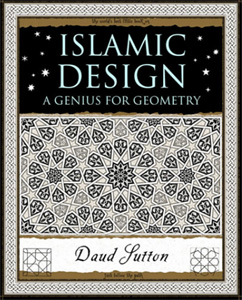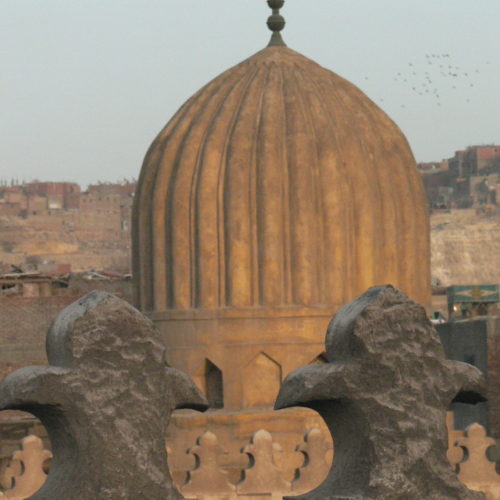Biomorphic Art
The Art of Arabesque
by Adam Williamson
Biomorphic art, (also known as Islimi, nebati, Arabesque) is one of the three distinct disciplines that underpins Islamic art (the other two being Calligraphy and Geometry). Islimi designs are biomorphic, floral patterns representing the underlying order and unity of nature; they are evident throughout the artwork of various cultures within the Islamic world from Morocco to Malaysia.
There are a variety of different styles of Islimi within Islamic art but they all follow the same archetypal principles. These principles apply to biomorphic decorative arts from many diverse cultures around the world, such as the Celtic, Norse and Aboriginal traditions.
Three key elements at the heart of biomorphic compositions:
The eternal spiral
Behind most designs there is a spiral from which the motifs and leaves sprout. The movement of nature inspires the unbroken flow of the spiral, it has no hard corners and the curves are sweeping and gentle. As the spiral advances it radiates secondary spirals, they in turn radiate spirals and soon the page is overgrown. The spiral progresses from its source like a plant from a seed growing toward the light. This centrifugal movement reflects the progression of creation from the creator, moving to infinity.
Symmetry and structure
Once a section of spirals are drawn they are reflected and repeated to fill a page wall or dome. Symmetry is fundamental to a harmonious design, it exemplifies completeness and perfection and the desire for unity.
Rhythm and Balance
Islimi designs tessellate across the surface with an even rhythm and texture. No part of the design takes precedence and pushes to the foreground; the designs vibrate and oscillate evenly, undulating like the sea. This effect is created by the repetition and the careful even arrangement of the motifs.

1928 Karl Blossfeldt
Applications
In the book arts, Islimi is used to illuminate calligraphic headings and within shamsahs (little suns) which are palmettes that divide verses of text. Most famously it is interwoven with geometric patterns to create beautiful frontispieces (the first page of the Quran).
Islimi is a key architectural feature, examples can be found in ornate ceramic, stone, plaster and wood carved friezes. Islimi designs are also found embellishing domestic objects such as utensils, cloths and carpets.
Motifs and styles / Origins and development
Islimi designs gradually emerged as the floral, vegetative style of Islamic art in various forms around the world. As Islam spread and nations adopted the faith, they stylized their decorative arts to fit the principles of Islam. At the same time they were inspired by each other. Most notable influences were from Chinese and Byzantian arts.
The development of one of the most common Islimi styles; Rumi (a Turkish and Persian term) was developed by the Seljuks from Central Asian Turk cave paintings of animals and birds. As the Seljuks moved into Anatolia in the 10th century and adopted Islam they stylized the wings and beaks and developed the Rumi motif. This motif was then replicated and developed around the Islamic world.
Motifs are abstract palmettes and stylized flowers. What separates the different Islimi styles are the motifs because they are representations of local plant life. This can make these designs feel like a continuum of the surrounding nature.

Rumi Style
Hiyong, Asiatic huns were creating animal motifs from the 4th century BC. These were developed by the Uyghur Turcs in 9th century AD, Anatolian Seljuks then used the animal wings and beaks to create the motif called Rumi. Rumi is taken from the word Rum, the Turk for Asiatic Rome, Byzantium.
The motif is beautiful in its simplicity and perfect in its archetypal proportions. The different components of the Rumi composition fit together in and around each other like a jigsaw puzzle. The following pages show these key components and how they are arranged the produce a traditional design.
Motifs

The designs below are made by fitting different coloured cut stone together. The designs show how the Rumi and tepelik motifs fit together, the piece on the right shows how the positioning of a tepelik motif creates Rumi motifs in the background.

STRUCTURE
There are two structural linear foundations; the spiral and the kapali. The motifs are attached to these shapes. The spiral and the kapali often exist as separate parallel designs one over laying the other but the motifs are placed between the lines observing the other design, this creates an interwoven effect.

These two components can be seen clearly in the cut tile piece (left). The spiral design is turquoise and the kapali design is white.
In this picture you can also see a subdividing Rumi composition, for example: if you look at the Rumi motif with a second motif flowing from it, you can see the same set of motifs within it.
Compositions
Kapali
Kapali means ‘closed’. Kapali forms are linear structural lines, which are usually based on an underlining geometric grid ensuring they reflect or tessellate correctly. The shapes are versatile and have architectural properties; the crown shape is used in domes and gateways across the Islamic world. Within a design it reflects itself and motifs helping patterns slot together.





